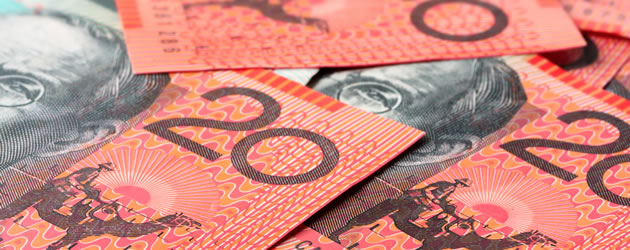Fears over a worsening global economy and lowering commodities are holding back the ‘Aussie’ (AUD) as the EUR/AUD pairing is bolstered by improved Eurozone PMIs.
Positive Australian Data Overshadowed by Chinese Concerns to Set EUR/AUD Exchange Rate on Uptrend
Limited economic data releases allowed the continuing progress towards finalisation of the third Greek bailout and the approaching European Central Bank (ECB) repayment deadline to dominate Euro (EUR) sentiment for much of the week. In spite of concerns and some vocal opposition, the deal was ultimately approved by all of the necessary Eurozone parliaments, including the previously reluctant Bundestag. Thus, after the European Stability Mechanism (ESM) signed off the bailout on Wednesday evening, the first disbursement of funds to Greece arrived on schedule yesterday. In response the EUR/AUD exchange rate fast climbed to 1.5290.
The ‘Aussie’ (AUD), on the other hand, saw two potentially strong rallying points in the early week with hawkish meeting minutes from the Reserve Bank of Australia (RBA) and an as-expected outcome on the Westpac Leading Index. However, any boost the antipodean currency might have hoped for on the strength of these reports was lost due to more bad news from China. With copper prices sinking to a fresh six-year low and many of the nation’s other key exports following suit the ‘Aussie’ ultimately continued to slump against the majors.
Sinking Iron Ore Pulls Down ‘Aussie’ (AUD) as Euro (EUR) Rises on Improving Eurozone PMI Figures
Greece refuses to leave the minds of traders, however, after Prime Minister Alexis Tsipras stepped down yesterday to clear the way for fresh elections to be held in September. Although this throws the possibility of the Hellenic nation successfully passing its first conditional creditor inspection in October into uncertainty the markets have not reacted quite as unfavourably as might have been expected. With twenty-five of Syriza’s far-left MPs breaking away to form a new party, now the third largest in Athens, the chance for Tsipras to achieve re-election with the backing of a more cooperative, pro-bailout majority appears to outweigh other concerns for the time being. A strong German Manufacturing PMI and improved composite figures for the Eurozone as a whole have also no doubt contributed to the buoyancy of the single currency today.
A significantly worse than anticipated Chinese Manufacturing PMI, 47.1 rather than 48.2, published this morning has caused panic on the local stock markets. Indicating that the world’s second largest economy is contracting at a faster rate than previously thought, this had a knock-on effect on the value of its major import commodities. Iron ore in particular is now expected to drop again for the first time in over a month, which does not bode well for the fragile state of the Australian mining sector. Consequently the EUR/AUD pairing climbed again to strike a fresh eighteen-month high of 1.5460 in the early hours.
EUR/AUD Exchange Rate Forecast: Today’s Eurozone Consumer Confidence Could Dent the Single Currency
This afternoon’s Eurozone Consumer Confidence Survey could be facing a dip after a lower than anticipated figure was posted for the corresponding German index and could send the common currency on a downturn.
Data will be a bit thinner on the ground for the ‘Aussie’, with the only major domestic source of movement the Conference Board Leading Index on Tuesday. As it forecasts short-term growth in the Australian economy this figure could compound the currency’s current problems if it provides confirmation of a negative trend. A better than expected projection, however, could be enough to turn the Australian Dollar around, assuming that there are no greater blows to come from China.
Current EUR, AUD Exchange Rates
At time of writing the Euro to Australian Dollar (EUR/AUD) exchange rate was trending upwards at 1.5370, with the Australian Dollar to Euro (AUD/EUR) pairing falling in the region of 0.6504.



